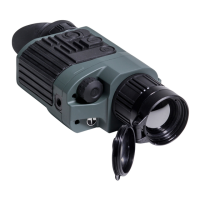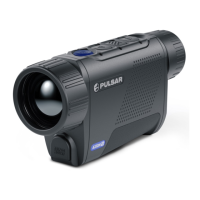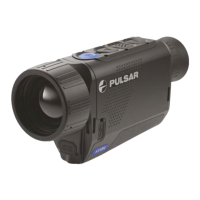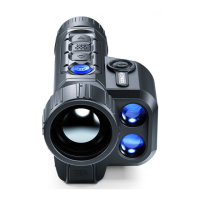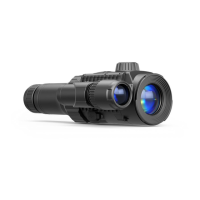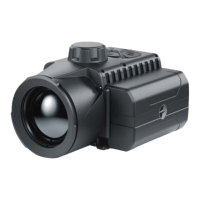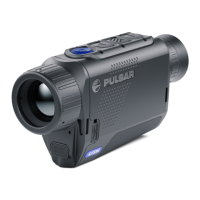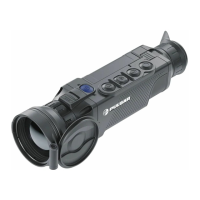12
13
Press briefly the controller to confirm your choice.
Unit of measurement icon is shown together with measured readings.
To exit the submenu, keep the controller pressed for two seconds or
wait 10 seconds to exit automatically.
Digital zoom
To activate digital zoom, press briefly button “Mode” (3).
Digital zoom change is shown as a pop-up symbol and takes place
repeatedly, when the final value is reached, the first value is shown
(see table below).
Set value of the full optical magnification is shown in the status bar.
The unit does not save the magnification value. Upon turning the unit
on, full optical magnification will correspond to the value of optical
magnification with x1 ratio.
Magnification ratio
Model Optical magnification x1 x2 x4
Full optical magnification
1.6х
3.1x
XQ23V
XQ30V
1.8х 3.6x 7.2x
2.5x 5.0x 10.0x
Monoculars are equipped with a video output to connect external
recording devices and to transmit video signal to monitors, TV sets etc.
VIDEO OUTPUT
10
To record video you can use video recorders such as Yukon MPR
(#27041).
Make sure that the unit is turned off.
Use the included video cable to connect a peripheral device to the
“Video out” jack (14). Turn on the unit.
Select a suitable video output standard - PAL or NTSC (refer to the
respective menu option). A peripheral device will show the image seen
through the scope.
ACCESSORIES
11
Using the Weaver mounting rail (8), you can attach various accessories
to the Quantum scopes, such as Battery Pack EPS3I (SKU#79113).
The ¼” tripod mounts from both sides of the scope are designed to
have the scope installed on a tripod or have a hand strap (included)
attached.
Using the DNV Pulsar Battery Double Pack (#79176) you can
significantly extend the self-contained operating time of your
monocular.
CARE AND MAINTENANCE
12
The thermal imaging scopes have IPX4 degree of protection
(splashproof) but they are not intended for submersion into water.
Attempts to disassemble or repair the scope will void the
warranty!
Clean the scope's optical surfaces only if necessary, and use
caution. First, remove (by blowing with a blower brush or canned air)
any dust or sand particles. Then proceed to clean by using
camera/lens cleaning equipment approved for use with multicoated
lenses. Do not pour the solution directly onto the lens!
TROUBLESHOOTING
13
Listed below are some potential problems that may occur when using
the scope. Carry out the recommended checks and troubleshooting
steps in the order listed. Please note that the table does not list all of
the possible problems. If the problem experienced with the scope is
not listed, or if the suggested action meant to correct it does not
resolve the problem, please contact the manufacturer.
The scope can be used in operating temperatures ranging from
-25 °C to +50 °C. However, if it has been brought indoors from cold
temperatures, do not turn it on for at least 2-3 hours. This will prevent
external optical surfaces from fogging.
Always store the unit in its carrying case in a dry, well-ventilated
space.
Remove the batteries if the scope is not going to be used for an
extended period (longer than one month).
Batteries shall not be exposed to excessive heat such as sunshine,
fire or the like.
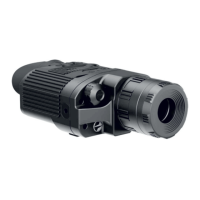
